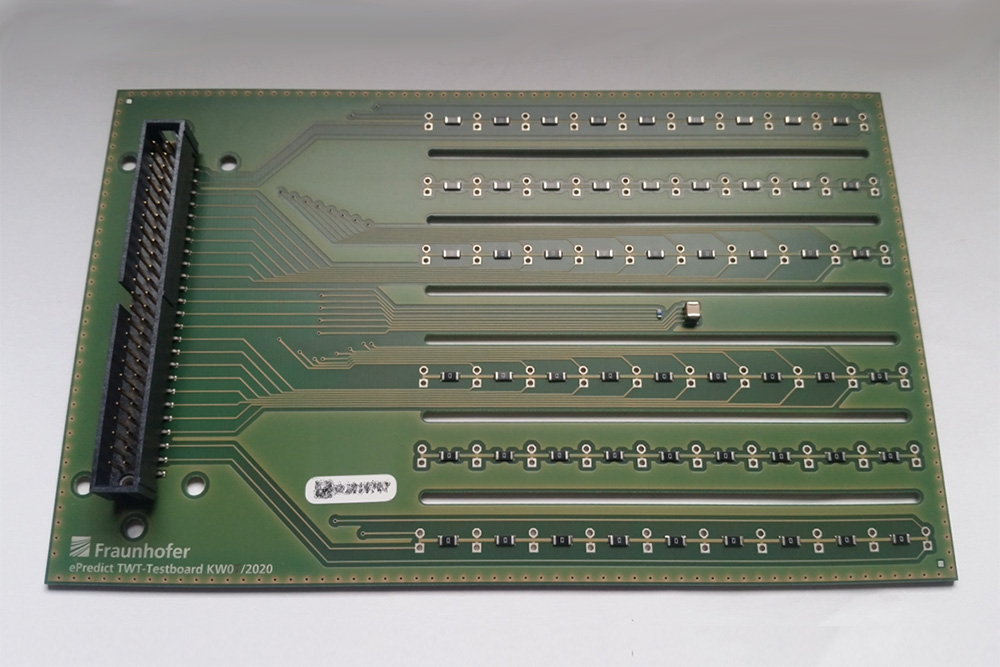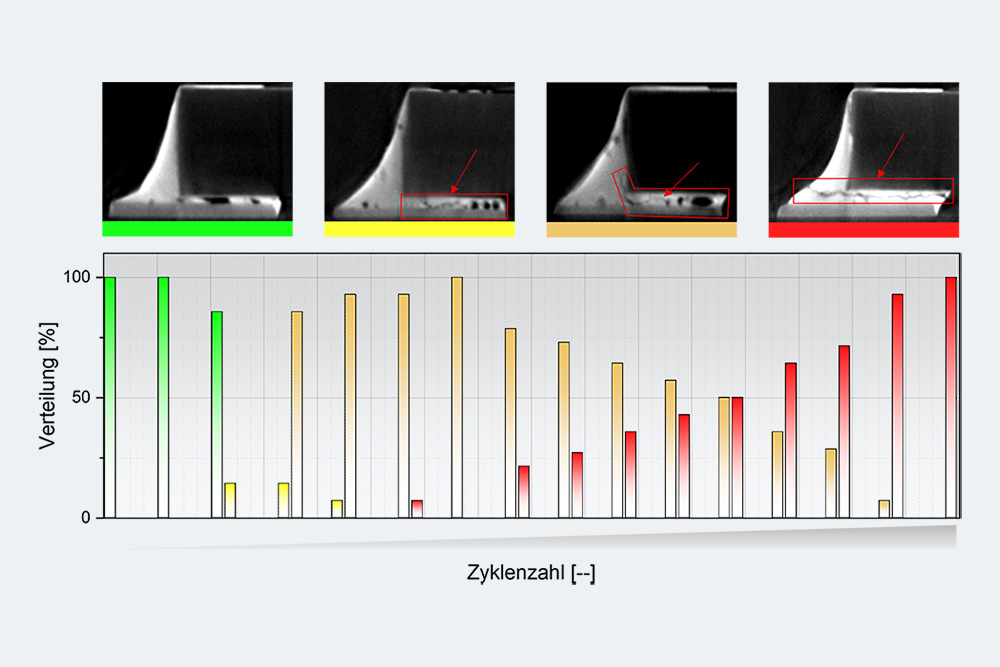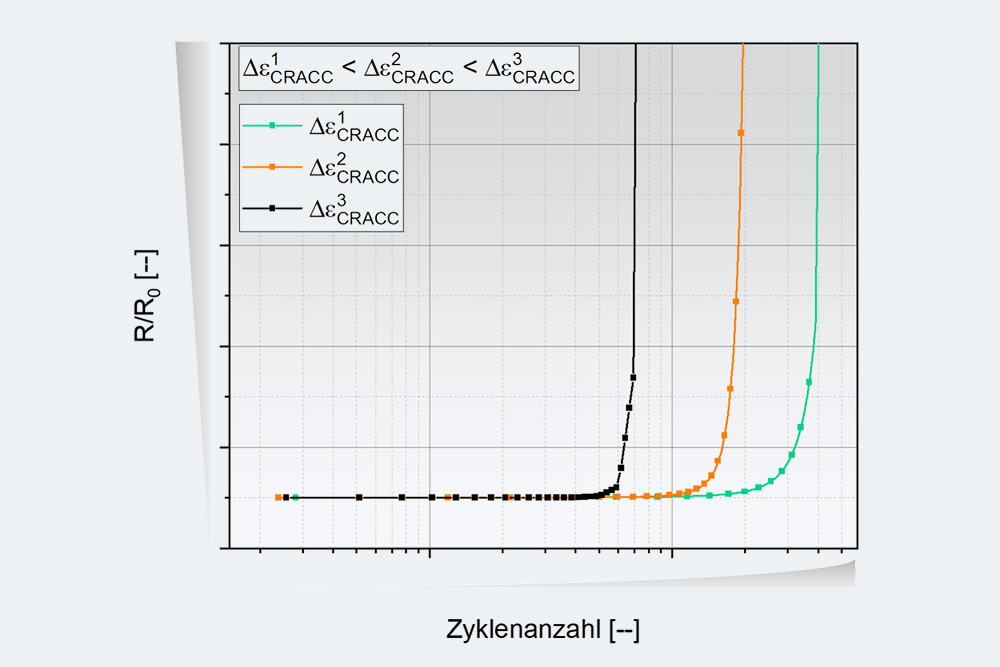Thermal loads dominate the causes of failure of electronic components with more than 50 %. The cyclic thermal loads electrical components are exposed to due to climatic conditions or intrinsically because of their functionality lead to thermo-mechanical stresses on the substrate, connection and component due to the high material mix of the assembly. Fraunhofer IKTS uses the following approaches:
- Lifetime modeling by means of suitable test specimens
- Accelerated ageing
- Damage progress monitoring using XCT
- In-situ resistance measurement technology


